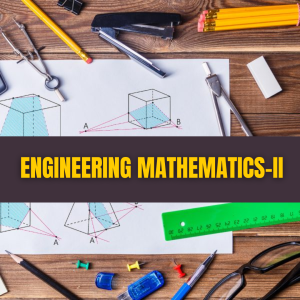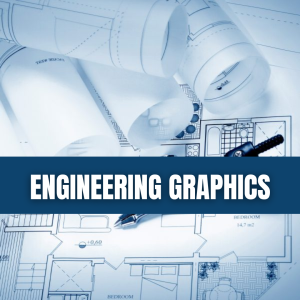Electrical Engineering
11.98$
About the course
This course gives a basic knowledge of DC and AC Circuits and the Theorems associated with them. The students are expected to learn and understand the Importance and Applications of Single Phase and 3 Phase AC Circuits. We shall also cover Power Systems, Magnetic Circuits, and Transformers in brief.
What will you learn?
The complete online syllabus of this course comprises 8 Learning Modules | 108 Topics of Learning | 5.3 Hours of Learning | 38 Assessments
Module
- DC Circuit Analysis and Network Theorems
- Electrical Resistance and Ohm’s Law
- Steady-State Analysis of Single-Phase AC Circuits
- Three-Phase AC Circuits
- Magnetic Circuit and Electromagnetism
- Single Phase Transformer
- DC machines
- Three-Phase Induction Motor & Synchronous Machines
Topics of Learning
- Circuits and Networks
- Active and Passive Elements
- Unilateral and Bilateral Elements
- Linear Elements and Linearity
- Kirchhoff’s Current Law
- Kirchhoff’s Voltage Law
- Loop Method of Circuit Analysis
- Nodal Method of Circuit Analysis
- Star and Delta Configuration
- Resistance
- Effect of Temperature on Resistance
- Computation of Resistance at Constant and Different Temperature
- Resistance in Series and Parallel Circuits
- Ohm’s Law
- Work, Power and Energy
- RL series circuits
- Instantaneous Rising Current in a Series RL Circuit
- Instantaneous Decaying Current in a Series RL Circuit
- RC series circuits
- Instantaneous Rising Voltage across Capacitor
- Instantaneous Decaying Voltage across Capacitor
- AC Generation
- Types of Waveforms: Sinusoidal, Triangular and Square
- Basic Terms: Cycle , Time Period, Frequency and Amplitude
- Maximum Value, RMS Value and Average Value
- Form Factor, Crest Factor and Peak Factor
- Impedance and Reactance
- Rectangular Representation
- Polar Representation
- Phase and Phase Difference
- Phasor Diagram
- Phasor Diagram: Pure Resistive Circuit (R)
- Phasor Diagram: Pure Capacitive Circuit (C)
- Phasor Diagram: Pure Inductive Circuit (L)
- Phasor Diagram: R-L Circuit
- Phasor Diagram: R-C Circuit
- Phasor Diagram: R-L-C Circuit
- Active Power
- Apparent Power
- Power Factor
- Power Factor Improvement
- Resonance
- Resonance in Series R-L-C Circuit
- Bandwidth in Series R-L-C Circuit
- Q Factor in Series R-L-C Circuit
- Resonance in Parallel R-L-C Circuit
- Q Factor in Parallel R-L-C Circuit
- Three-Phase System: Necessity and Advantages
- Three-Phase EMF Generation
- Phase Sequence
- Phase Quantity
- Line Quantity
- Balanced Supply and Balanced Load
- Analogy Between Electric and Magnetic Circuit
- Magnetic Field Strength (H)
- Flux
- Flux Density (B)
- Permeability
- Force on a Current carrying Conductor Lying in a Magnetic Field
- Fleming’s Left-Hand Rule
- Magnetic Circuit
- Magnetic Motive Force (MMF)
- Reluctance
- Biot- Savart Law
- Ampere’s Circuital Law
- Series Magnetic Circuits
- Analogy Between Magnetism and Electricity: EMI
- Faraday’s Law
- Lenz’s Law
- Fleming’s Right Hand Rule
- Statically Induced EMF
- Dynamically Induced EMF
- Self Inductance
- Mutual Inductance
- Coefficient of Coupling
- Inductance in Series
- Inductance in Parallel
- Principle of Operation
- Construction
- Turn Ratio and Transformation Ratio
- Step–Up and Step–Down Transformer
- Ideal Transformer
- Transformer on No Load
- Voltage Regulation
- Losses in Transformer
- Efficiency of Single-Phase Transformer
- DC Generator: Principle of Operation
- DC Generator: Construction
- DC Generator: Equivalent Circuit
- EMF Equation of Generator
- Separately Excited Generator
- Self-Excited Generator
- Self-Excited Generator: Series Wound
- Self-Excited Generator: Shunt Wound
- DC Machine as a Motor: Working
- Back EMF
- Voltage Equation of a Motor
- Motor Characteristics
- Series and Shunt DC Motor
- Construction
- General Principle of Operation
- Production of Rotating Field
- Synchronous Speed and Slip Speed
- Frequency of Rotor Voltage and Current
- Synchronous Motor: Introduction
- Synchronous Motor: Principle of Operation
- Comparison between Three Phase Synchronous and Induction Motors
For a quick review, please watch our videos here 




